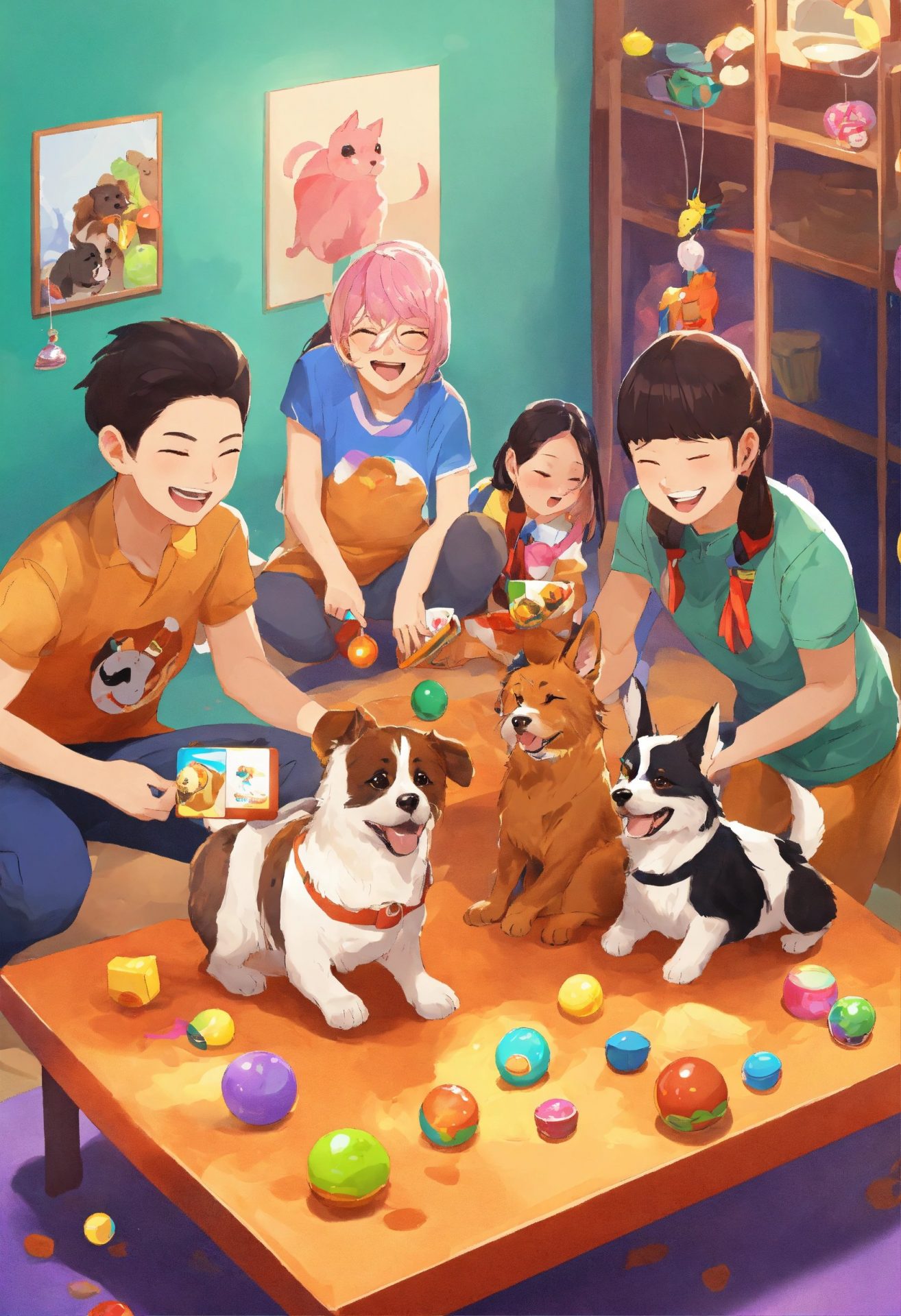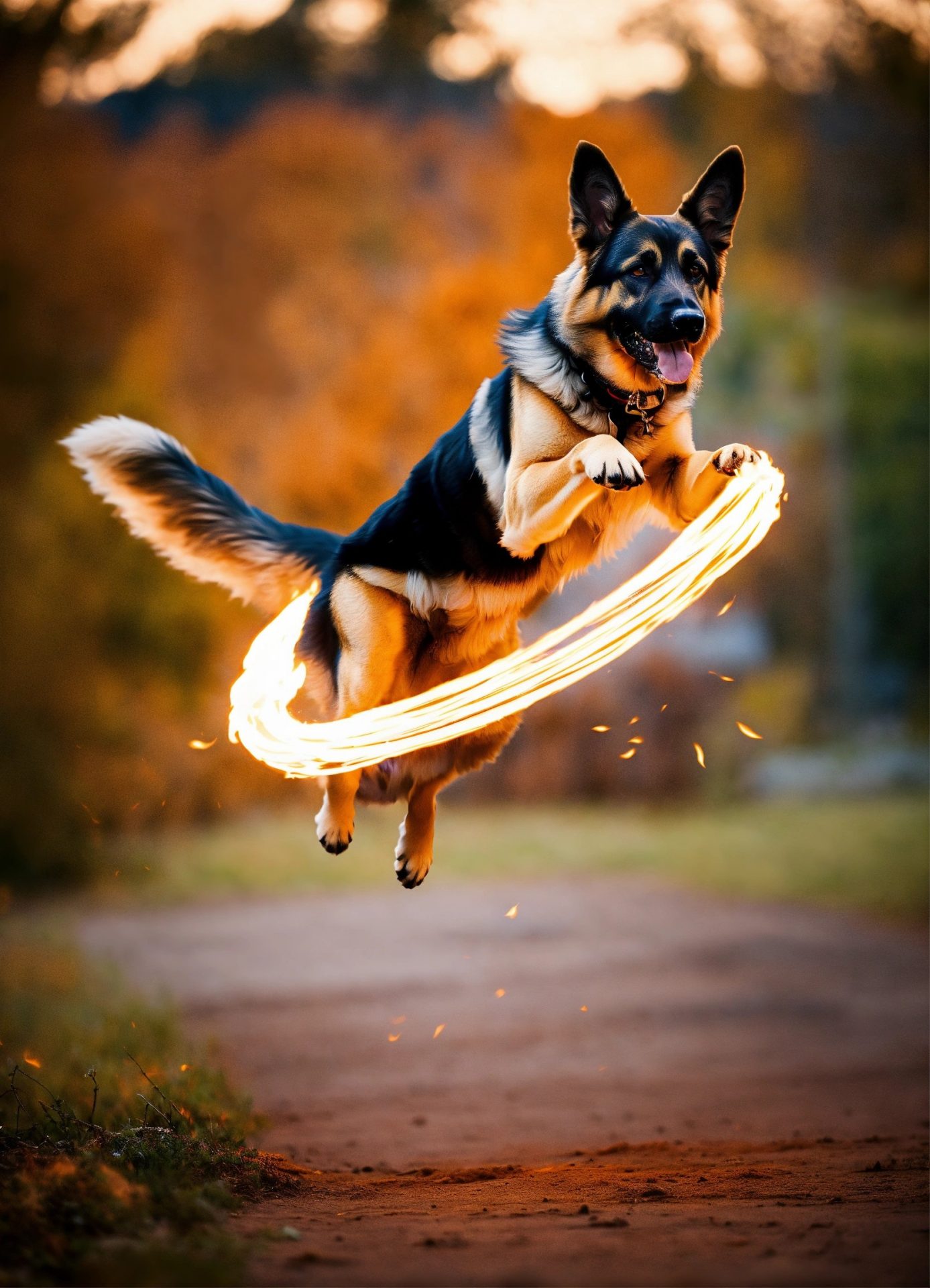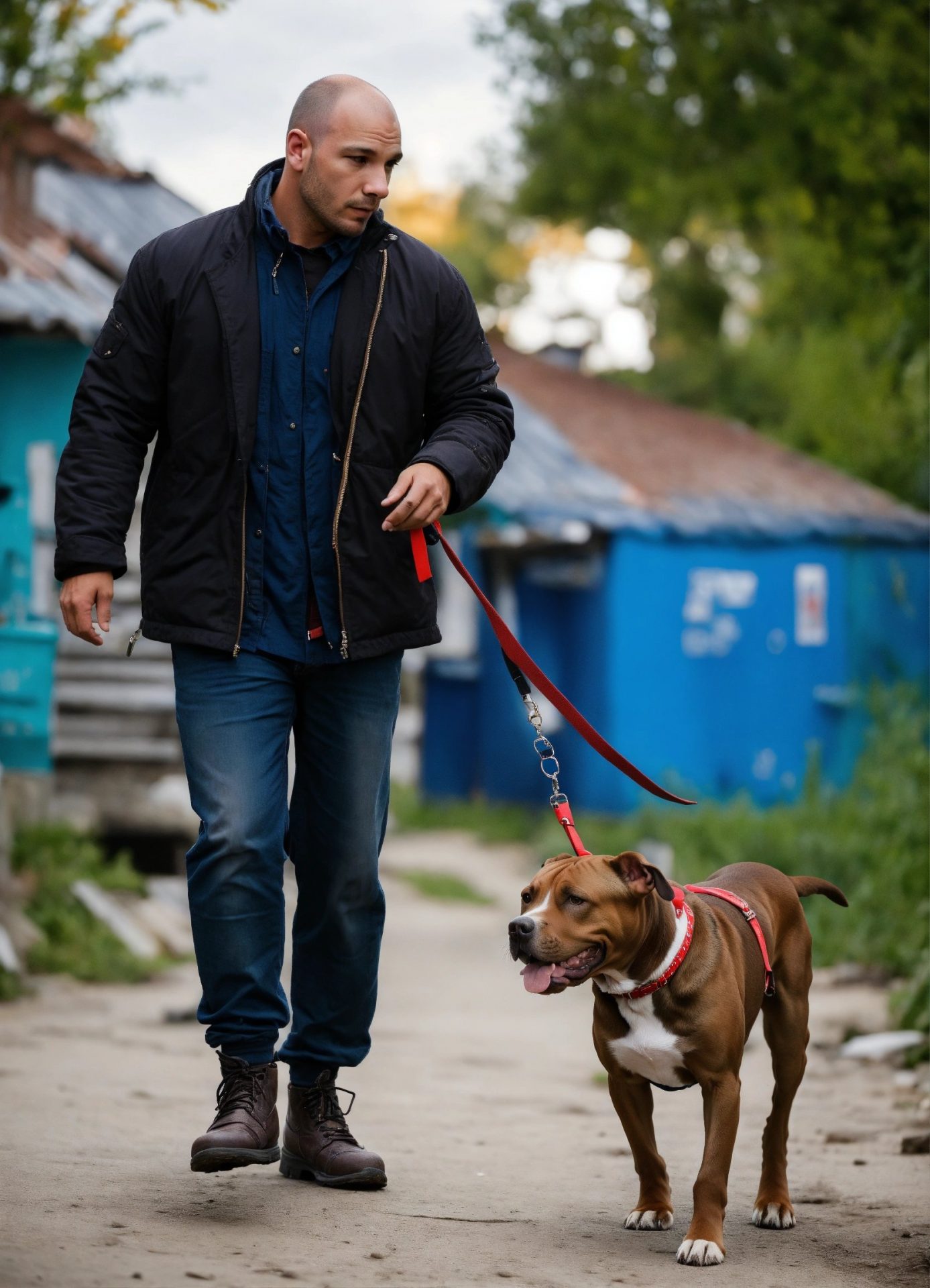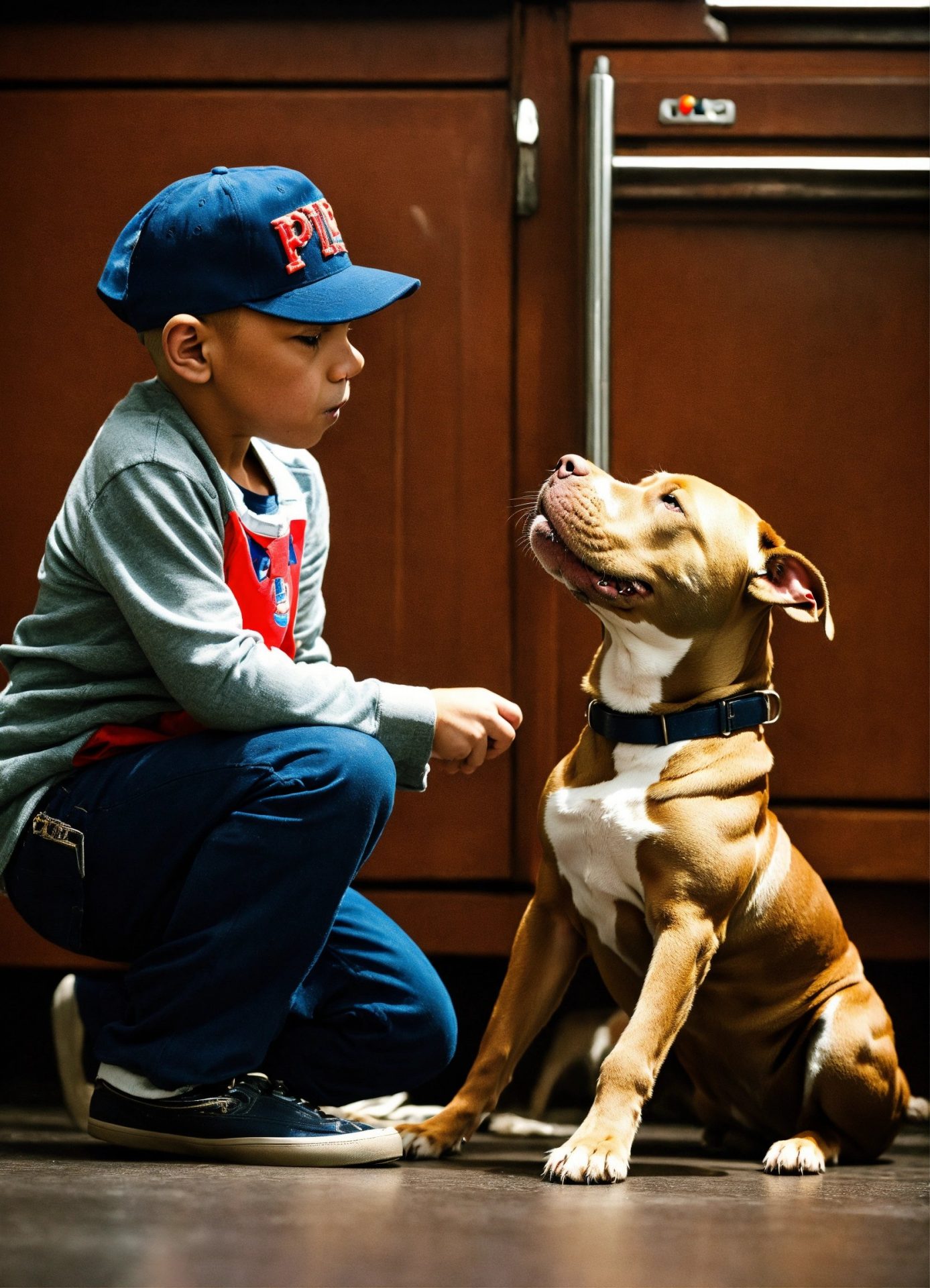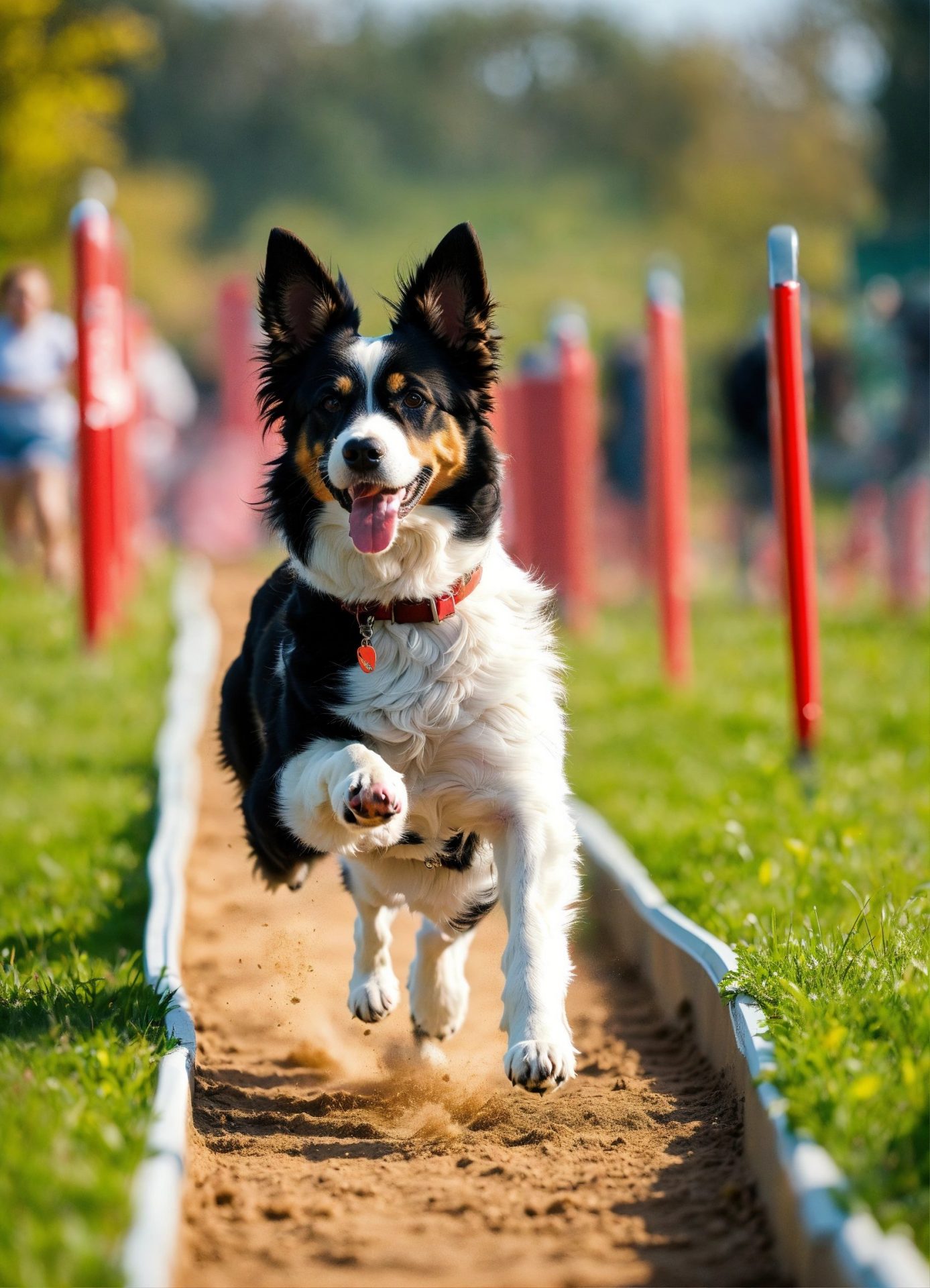
Welcome to the world of engaging puppy training games, where learning becomes a tail-wagging adventure!
Meet Adrienne Farricelli, a seasoned CPDT-KA certified dog trainer, with over a decade of experience in transforming dogs into well-behaved, obedient companions. Adrienne’s approach revolves around unlocking the “hidden intelligence” in every dog, tapping into their innate abilities to foster positive behaviours.
Now, imagine incorporating Adrienne’s brain training for dogs into your puppy’s playtime routine. With her proven methods, you can quickly eliminate any behavioural issues, no matter how deeply rooted they seem. Each game is designed to challenge your pup’s mind, encouraging problem-solving and boosting confidence.
Whether it’s teaching basic commands like sit and stay or addressing more complex behaviours, these training games offer a holistic approach to your puppy’s development. From agility courses to scent games, there’s something for every pup to enjoy. So, join us on this exciting journey as we dive into the world of puppy training games. Below is the link for this book of Adrienna Farricelli and its 50 % off for 48 hours.And In this blog, we explore fun and interactive ways to teach your pup essential skills while strengthening your bond.
Visit The Official Website And Place Your Order For The Best Prices Available!
1. Cultivating Social Skills: Diversity Training for Puppies
Introducing your puppy to a variety of people in positive settings is crucial for their social development. By exposing them to individuals of different ethnicities, ages, and even those in uniform, you help them build confidence and reduce the likelihood of fearfulness towards strangers.
Here’s how you can conduct diversity training for your puppy:
- Meet a Variety of People: Seek out individuals from diverse backgrounds and ask them to interact with your puppy. This could include people of different ethnicities, ages, and professions such as those in uniform.
- Positive Reinforcement: Encourage the people your puppy meets to offer treats as a form of positive reinforcement. This creates a positive association with meeting new people.
- Respect Your Puppy’s Pace: If your puppy shows any signs of reluctance or fear towards someone, avoid forcing them into the interaction. Instead, allow your puppy to approach at their own pace. Never pick up your puppy and hand them to someone they’re afraid of, as this can worsen their fear.
- Gradual Approach: For hesitant puppies, have the person toss treats from a distance and allow your puppy to approach when they feel comfortable. This gradual approach helps them build confidence gradually.
By following these steps, you can help your puppy develop essential social skills and navigate the world with confidence and ease.
2.Interactive Recall Practice: Round Robin Training Game
Elevate your puppy’s recall skills with an engaging round-robin training game! Gather a few friends, armed with treats, and form a small circle with your puppy at the center. Here’s how to play:
- Start the Rotation: Begin with one person calling your puppy in an upbeat tone, “Fido, come!” Encourage your puppy to approach them eagerly. Upon reaching the caller, reward your pup with a treat and plenty of praise.
- Rotate Callers: Keep the momentum going by having each person in the circle take turns calling your puppy. Each time your puppy responds to a recall, reward them promptly.
- Gradually Increase Difficulty: As your puppy masters the game, gradually expand the circle to increase the distance they must travel to reach the caller. This challenges their recall skills and reinforces the command even at greater distances.
- Respect Your Puppy’s Comfort Zone: If your puppy shows any hesitation or reluctance to approach a particular person, adapt the game by having that person toss treats to your puppy instead. This ensures a positive experience for your puppy while still reinforcing recall.
By incorporating round-robin recalls into your training routine, you provide your puppy with valuable practice in responding to commands amidst distractions, all while strengthening the bond between you and your furry companion.
3.Desensitizing Your Puppy: Embracing Noises
Help your puppy overcome fear of loud or unusual noises with positive reinforcement techniques. Here’s how to tackle it effectively:
- Gradual Exposure: Introduce noises gradually from a distance, allowing you to observe your puppy’s reaction. For instance, start a hairdryer from across the room and immediately reward your puppy with a treat as you turn it off. Assess whether your puppy is curious or afraid.
- Adjust Intensity: If your puppy shows fear, either increase the distance from the noise source or reduce its intensity. As your puppy gains confidence, gradually bring the noisy object closer.
- Encourage Curiosity: If your puppy approaches the noise on their own, celebrate their bravery with praise and extra treats. This reinforces positive associations with noises.
- Unpredictable Noises: Be prepared for unexpected loud noises, such as thunder. Quickly diffuse the situation by making light of the noise and offering treats. This helps your puppy associate unpredictable noises with positive experiences.
By employing these strategies, you can help your puppy develop resilience to various noises, ensuring they grow up unafraid and confident in the face of unexpected sounds.
Visit The Official Website And Place Your Order For The Best Prices Available!
4. Positive Collar Interaction: Turning Handling into Play
Maintain a positive association with collar handling by incorporating playful games into your routine. Here’s how to ensure a happy collar experience for your puppy:
- Playful Engagement: Introduce collar-holding games to associate collar handling with positive experiences. In a cheerful tone, call out “Gotcha!” as you gently grasp your puppy’s collar, followed immediately by offering a treat.
- Reinforce Positivity: By pairing collar touches with treats and praise, you reinforce the idea that collar handling leads to pleasant outcomes, mitigating any potential negative associations.
- Prevent Negative Associations: Avoid creating negative associations with collar handling, as this could lead to avoidance behaviours or aggression in the future. Instead, prioritize gentle, positive interactions.
- Find the Perfect Collar: Explore our curated selection of top-quality collars at the Modern Dog shop to find the perfect fit for your puppy. From stylish designs to durable materials, we’ve got you covered.
By incorporating these playful techniques and finding the right collar for your puppy, you can ensure that collar handling remains a positive and enjoyable experience for both you and your furry companion.
5. Pawsitive Handling: Building Trust Through Gentle Touch
Foster a positive relationship with handling by teaching your puppy to relax and enjoy gentle touches. Here’s how to make handling a delightful experience for your furry friend:
- Reward-Based Approach: Prepare treats and begin by gently touching your puppy’s ears, then promptly reward them with a treat. Repeat this process for each ear and continue with other body parts, such as paws, tail, and teeth.
- Gradual Introduction: Progressively touch different parts of your puppy’s body while offering treats to create positive associations with handling. Pay attention to your puppy’s reactions and adjust your approach accordingly.
- Identify Preferences: Notice which areas your puppy may be less comfortable with and work on those spots with shorter touches and higher-value treats. This helps your puppy gradually acclimate and learn to enjoy being handled all over.
- Building Trust: Conclude the handling session with a comforting hug, followed by a treat. This reinforces trust and reassures your puppy that handling leads to positive outcomes.
By implementing these gentle handling techniques and rewarding your puppy’s cooperation, you can cultivate a bond built on trust and mutual respect, making future grooming, veterinary care, and other necessary procedures more manageable for both you and your furry companion.
Visit The Official Website And Place Your Order For The Best Prices Available!
6. Sit Pretty: Training Your Puppy to Stay Grounded
Tired of your puppy’s jumping habit? Teach them the “Sit” command as a polite alternative and make petting a reward for good behaviour. Here’s how to do it:
- Lure and Reward: Hold a treat above your puppy’s nose and slowly move it backward over their head toward their tail. As they follow the treat, their rear should naturally lower into a sitting position. Immediately reward them with the treat once they sit.
- Repeat and Reinforce: Practice this exercise until your puppy can perform five sits in a row consistently. Gradually transition to using a hand motion without a treat in your hand, which will become your hand signal. Dogs often respond better to visual cues than verbal ones.
- Introduce Verbal Cue: Once your puppy responds reliably to the hand signal, introduce the verbal cue “Fido, Sit.” Pair the verbal cue with the hand signal, rewarding your puppy when they comply.
- Transition to Verbal Cue: With consistent practice, your puppy will begin to associate the verbal cue with the desired behavior. Slowly phase out the hand signal, relying solely on the verbal cue “Sit” to prompt the behavior.
By following these steps and offering positive reinforcement, you can teach your puppy to sit politely for petting, helping to curb their jumping behavior and promote good manners.
Here are two things you should avoid:
1. Dog Park Outings
Steer clear of dog parks when socializing your puppy. These environments can be unpredictable, with the risk of encountering sick or aggressive dogs due to irresponsible owners. You have limited control over interactions at a dog park, so it’s best not to expose your puppy to potential harm that could leave lasting emotional scars
2. Food Interference
Resist the urge to interfere with your puppy’s meals by sticking your hands in their food or abruptly taking it away and then returning it. While you may think you’re asserting dominance, this behavior can create confusion and lead to possessiveness or food-related aggression. Instead, make mealtime a positive experience by gradually adding food to their dish, ensuring that your approach is reassuring rather than alarming.
Conclusion
In conclusion, engaging puppy training games offer a delightful approach to teaching your pup essential skills while fostering a strong bond between you and your furry companion. From interactive play to problem-solving challenges, these games provide fun ways to stimulate your puppy’s mind and promote positive behaviours.
To take your puppy’s training to the next level, consider incorporating “Brain Training for Dogs” by Adrienne Farricelli, a renowned CPDT-KA certified dog trainer. With over a decade of experience, Adrienne’s program focuses on unlocking your dog’s hidden intelligence to eliminate unwanted behaviors and cultivate a well-behaved, obedient pet. By tapping into your dog’s innate abilities through brain training exercises, you can transform training sessions into enjoyable experiences for both you and your pup.
Ready to embark on this exciting journey of discovery and learning with your puppy? Visit [https://dutchermart.com/product/brain-training-for-dogs/] to explore Adrienne Farricelli’s “Brain Training for Dogs” program and unlock your pup’s full potential today!


